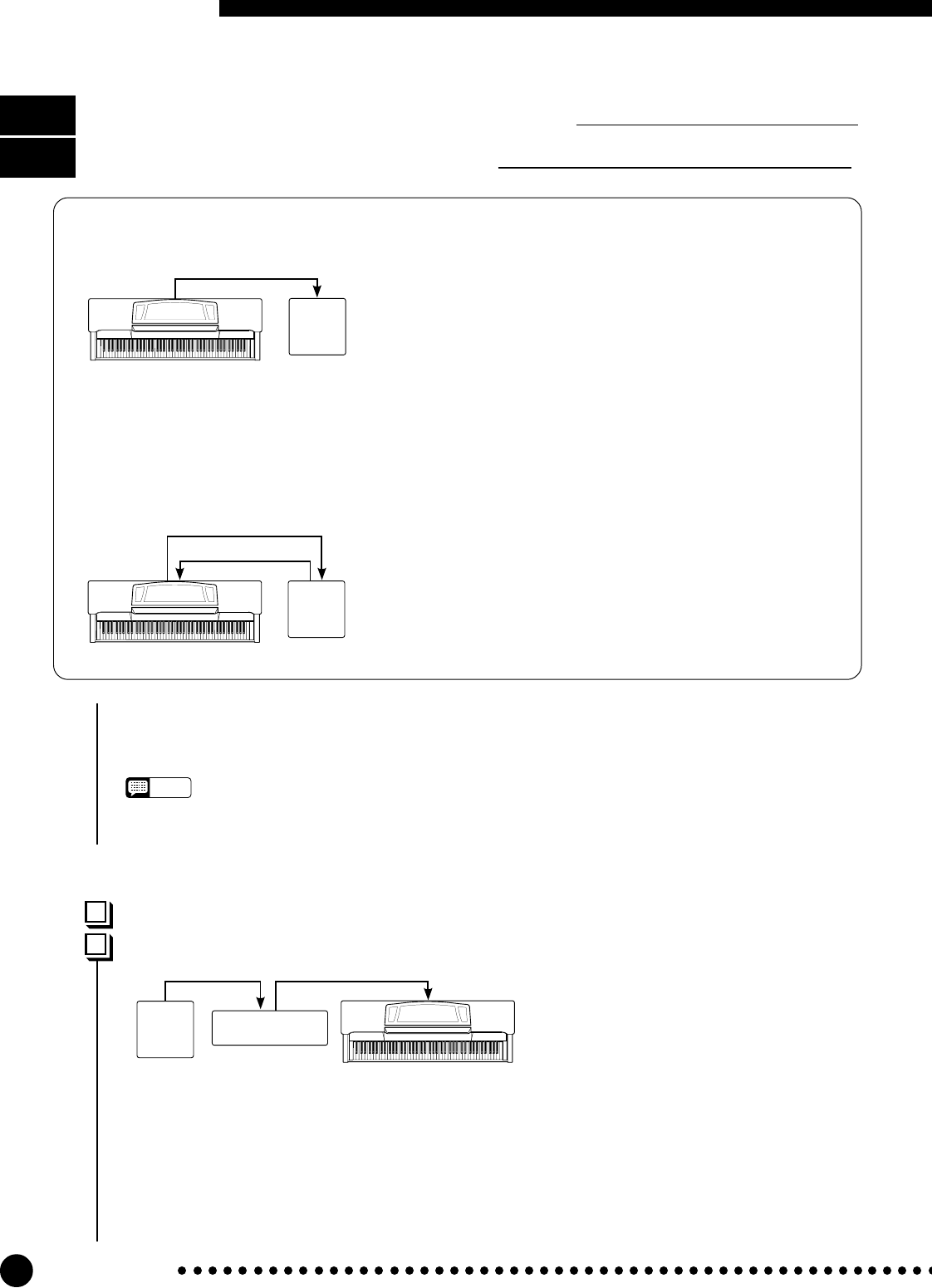
34
CLP-880/860/840/820/820S
F8
CLP-880/860 MIDI Functions
● A Brief Introduction to MIDI
MIDI, the Musical Instrument Digital Interface, is a world-
standard communication interface that allows MIDI-compatible
musical instruments and equipment to share musical information and
control one another. This makes it possible to create “systems” of
MIDI instruments and equipment that offer far greater versatility and
control than is available with isolated instruments. For example,
most MIDI keyboards (including the Clavinova, of course) transmit
note and velocity (touch response) information via the MIDI OUT connector whenever a note is played on the
keyboard. If the MIDI OUT connector is connected to the MIDI IN connector of a second keyboard (synthesizer,
etc.) or a tone generator (essentially a synthesizer with no keyboard), the second keyboard or tone generator will
respond precisely to notes played on the original transmitting keyboard. The result is that you can effectively
play two instruments at once, providing thick multi-instrument sounds.
This same type of musical information transfer is used for MIDI
sequence recording. A sequence recorder can be used to “record”
MIDI data received from a Clavinova, for example. When the
recorded data is played back, the Clavinova automatically “plays”
the recorded performance in precise detail.
The examples given above really only scratch the surface. MIDI
can do much, much more. The Clavinova MIDI functions allow it to
be used in fairly sophisticated MIDI systems.
DOU-10
MIDI Cable
MIDI INMIDI OUT
Clavinova
DOU-10
Clavinova
Data Being Recorded
Playback Data
MIDI IN MIDI INMIDI OUTMIDI OUT
After selecting “F7.Y” or “F8.Y”, press the [+/YES] button to engage the MIDI function sub-
mode, then use the FUNCTION [<] and [>] buttons to select the desired MIDI function, as listed
below.
NOTE
• The rear-panel HOST SELECT switch must be set to “MIDI” in order to use the MIDI connectors. When you use
the TO HOST connector, set the HOST SELECT switch to the appropriate position for the type of computer you
are using (see page 38). In this situation, all MIDI settings described below will have affect on the MIDI signal in
and out of the TO HOST connector.
• Always use a high-quality MIDI cable to connect MIDI OUT to MIDI IN terminals. Never use MIDI cables longer
than about 15 meters, since cables longer than this can pick up noise which can cause data errors.
F7
CLP-840/820/820S MIDI Functions
F7.1/F8.1: MIDI Transmit Channel Selection .............................................................................
F7.2/F8.2: MIDI Receive Channel Selection................................................................................
The MIDI system allows transmission
and reception of MIDI data on 16 differ-
ent channels. Multiple channels have
been implemented to allow selective
control of certain instruments or devices
connected in series. For example, a single
MIDI sequence recorder could be used to “play” two different instruments or tone generators. One of
the instruments or tone generators could be set to receive only on channel 1, while the other is set to
receive on channel 2. In this situation the first instrument or tone generator will respond only to
channel-1 information transmitted by the sequence recorder, while the second instrument or tone
generator will respond only to channel-2 information. This allows the sequence recorder to “play”
two completely different parts on the receiving instruments or tone generators.
Tone Generator
MIDI IN
MIDI IN MIDI THRU
DOU-10
MIDI OUT
Clavinova
(Set to receive on MIDI channel 1)
(Set to receive on MIDI
channel 2)
The Function Mode


















